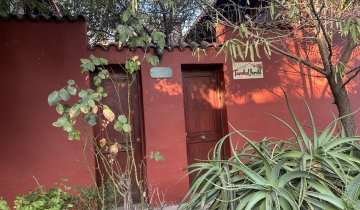Mipa Lee, artist, baker, vegan, and so many other things, writes a wonderful blog called Alien’s Day Out. Born in Busan, South Korea, she grew up mainly in Ghana, the Ivory Coast, England, Scotland and the US. She attended college in the US, then returned to Korea in 2006. Vegan since 2008, she is a passionate and influential veggie leader. I know she’s influential because Dylan Coyle, ESL teacher and moderator of the Seoul Veggie Club’s Facebook page, told me in an email that Mipa’s site is the “best Korean veggie site, and made me completely comfortable about moving here.” That’s a lot of influence, when your blog helps lure someone across the world.
You can buy Mipa’s adorable notecards on her Etsy page. And if you’re in South Korea, she will sell you baked goods. Which look extra delicious, by the way.
Mipa took time from her busy schedule to help me with my research for the Korea chapter of Vegetarian Asia: A Travel Guide. Here’s what she told me about vegan life in Korea. She has a ton more to say on her blog, so make sure to read that, too, if you’re headed to Korea soon.
Teresa: What kind of reactions do you get from Koreans when you tell them you’re vegan? Do people even know what that means?
Mipa: I usually get a wide variety of reactions, ranging from awe to scoffing, but I find that the most common reaction is surprise, followed by curiosity. Most do not understand the word “vegan” so I have to explain to them that it is a strict form of vegetarianism, and then specifically mention that this includes all seafood, eggs and dairy. Most Koreans are familiar with the concept of vegetarianism for health reasons, but less so for ethical and environmental concerns, so they are naturally curious about my reasons for going vegan.
Teresa: What are the easiest vegetarian or vegan foods for a non-Korean speaking visitor to find in an ordinary restaurant (since it can be hard to locate vegetarian restaurants)?
Mipa: The easiest dish for a vegan visitor to get would be bibimbab which is rice mixed with various seasoned vegetables and usually topped with a fried egg. It is a very common dish and easy to modify to your dietary needs since all the different components are assembled in the bowl before serving. You just have to ask them to leave out the egg or any meat. Most restaurants do not include meat, but it’s always best to be safe.
Teresa: Any advice to vegetarian/vegan visitors to Korea?
Mipa: Besides doing some research ahead of time and finding veg-friendly restaurants online, I think learning some key phrases in Korean will help in ordering dishes in restaurants that are not necessarily veg-friendly. You might want to print out a card in Korean which states your dietary needs so that you can just show that to the server. Check this link with useful vocab and phrases.






